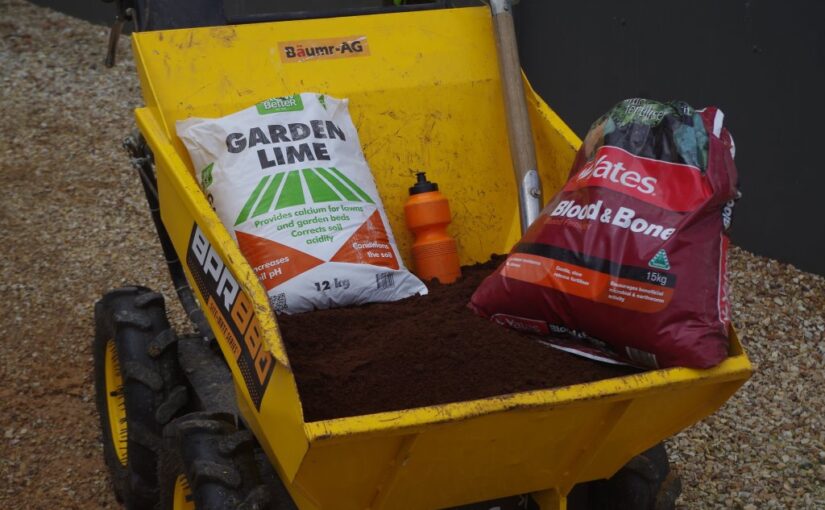The other day I gave a talk on the subject of soil. The direction of the topic was of my choosing, but the angle of the story alluded me. What would connect with the people listening? What would generate some interaction and discussion? Over and over, the subject bounced around and around in my mind. Days went by. The answer was slow coming, but like many answers, it was clear from hindsight. Why not? Talk about what you know, and what you have learned.
Western culture seems to thrive on the concept that more is better. That may be so. Despite having grown up in a poor single parent household, I’ve never known true hunger. Food has always been available. In my youth, food was basic, and mostly prepared from raw materials. It tasted, kind of like food was meant to taste. Something changed over the years though. Around the turn of the century, with a bit of age under my belt, and greater economic security than I’d ever previously experienced, I began wondering about why fruit had lost it’s taste over the years.
Skipping a bit of unnecessary background, at the time we purchased fruit from everywhere we could think of, hoping to rediscover taste. If you ever wondered how we came to have 300+ fruit trees growing here, well, we had to employ some of the old Chris and Sandra do-it-yourself ingenuity fluffy techniques. That’s how. After we’d planted many of the trees, we eventually found a commercial orchard committed to producing tasty fruit. They have supplied us for many years, especially when a marginal crop (for this location) such as apricots fails due to unfavourable weather.
Anyway, once you have all those hundreds of fruit trees planted out, the question becomes: How do you get them to grow and produce tasty fruit? Back in the day I used to write amusing and informative essays for the hippy press (Earth Garden Magazine and its cohorts). For US readers, it was probably the down under equivalent of ‘Mother Earth News’. One the knowledgeable gardening folks in the magazine used to promote the benefits of using ‘mulch’. So we brought in mulch. An awful lot of mulch over the years. Maybe six hundred cubic metres (about 800 cubic yards). That’s a lot of mulch.
The fruit trees however had other ideas, and they didn’t grow fast, or even produce much fruit. Adding mulch eventually produced a nice black sandy loam when it broke down, but still, the trees still didn’t grow fast here. A few years ago I’d read an oblique reference to mulch being promoted by the American author Ruth Stout (please correct me if I am wrong in this belief). Now Ruth was growing plants in Connecticut. They probably get more reliable summer rains there, and so the mulch laid down probably turns into soil quicker than here. Summers here can be hot and dry, and any mulch just sits there providing feed and shelter all year around for every slater (aka Woodlice) ever known to mankind. To add to the insult, those insects were eating the bark on the fruit trees. I’ve seen enough mulch for one life time and so stopped buying it.
In the early days of writing, the various magazines couldn’t take the volume of writing produced, and so I began writing for the lovely permaculture folks. At the time I became sort of enamoured of the whole ‘food forest’ concept. There’s a lot to like about the idea. So we trialled it here. Underneath and around the fruit trees, we grew berries and nitrogen fixing plants. What we learned was that the growing season here is very short. We also learned that you can grow a lot of happy rats and rabbits in the dense ground cover. The increased plant competition around the fruit trees during the short growing season didn’t benefit any of the plants. The soil remained cool and so everything grew poorly. And with thick foliage in and around the fruit trees, the rats had a serious party time. Abandoning that idea, all the vegetation under the fruit trees was dropped to the ground, and nowadays we keep the ground cover cut very low and away from the tree trunks. And the rats? Well, they’re nervous, as they should be.
But I was still troubled about how to feed the soil so that the fruit trees grew quickly and produced fruit. I’d heard that the Rodale mob in the US promoted compost and additions of dolomite as soil food additives (again please correct me if I am wrong in this belief). Compost wasn’t much more expensive to buy than mulch, and dolomite is readily available at plant nurseries. I’d give it a go. That didn’t work here either. Turns out the word ‘compost’ can mean literally anything that people want it to mean.

Thanks to the prodding and assistance of a lovely reader (you know who you are!), I began to comprehend the concept that a gardener, farmer, or anyone interested in growing plants, simply can’t slavishly accept any old guidance as a silver bullet solution. Most of the concepts you hear about probably work really well where ever they were originated and promoted from. Look at the purchased compost in the image above. That stuff has sat there for nigh on two years, and you’d expect that if it was super fertile, the remains of the mound would be covered in weeds. All I can see is a mangy chunk of grass. Without even testing the stuff, I know it has too much carbon and too little nitrogen, and is probably not much better than the mulch we used to buy in bulk. It’s possible that it is even the same stuff as the mulch, just a finer grade. It’s not to say the material is bad, but will it grow plants even more demanding than weeds like say: vegetables; and fruit? I don’t think so.


It’s not my place to tell other people what should work for them. Nowadays, we try to make the materials we have access too, work with the conditions that we have. And the fruit trees are now growing fast and fruiting a lot more. The vegetables, berries and all the rest of the edible plants seem to be doing OK. And they taste good. But I’m only getting to know how things work here, and that’s it.
It’s been a sunny and cool week here. The growing season is coming to an end, but over the past few weeks, the plants on either side of the many concrete staircases have grown strongly. In some places it was becoming hard getting up and down the staircases. We trimmed all of the plants and fully reopened the staircases.

All of the cut organic matter was taken down into the paddock and dumped on an area where the ground cover plants looked like they needed a soil feed. Then the mower was used to mulch it all up.
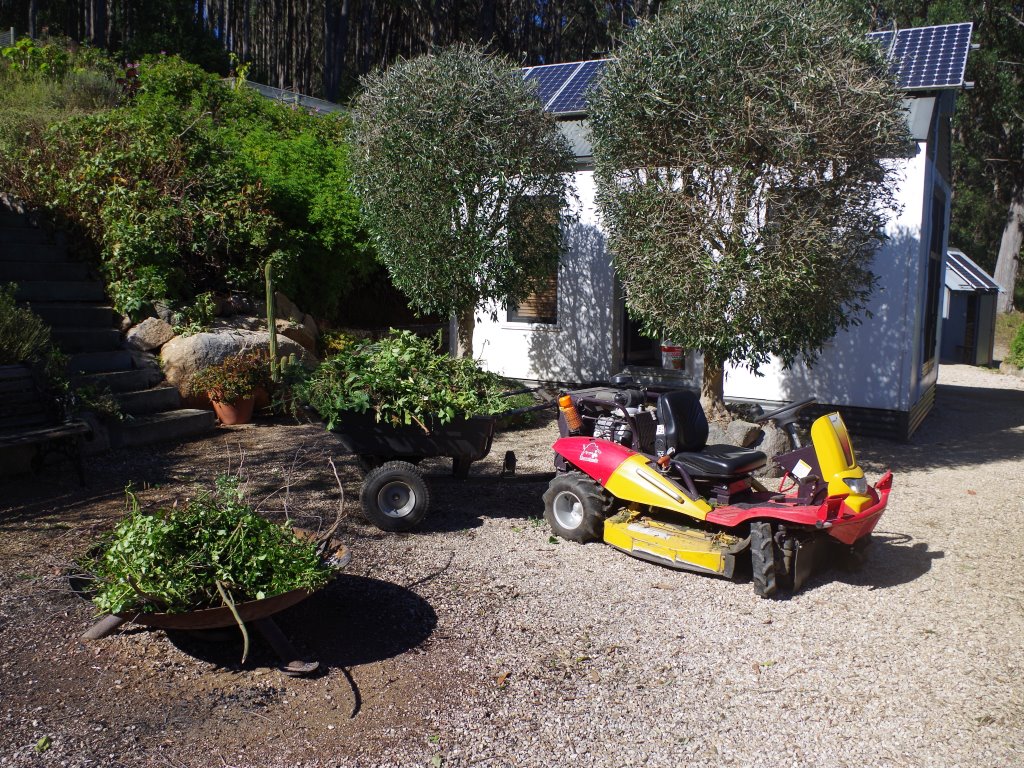
Another steel rock gabion cage was made.
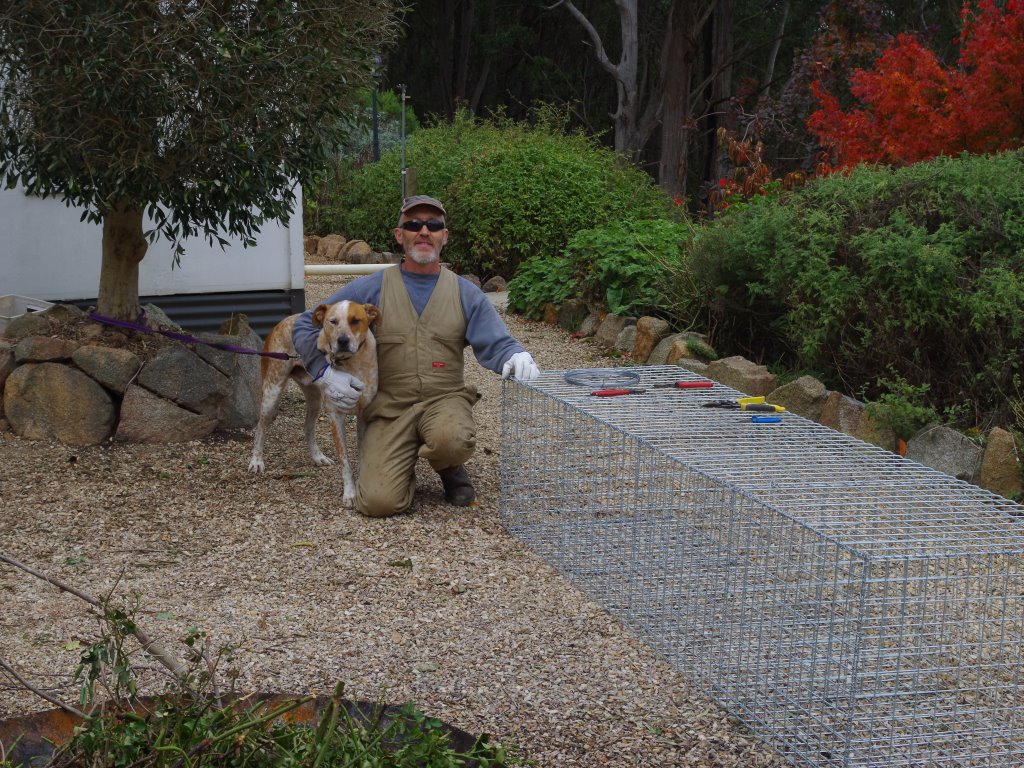
Observant readers will note that Ollie is tied to a sturdy olive tree. Ollie must learn to amend his ways, or get older. The cage was installed as the first of two cages which will retain the soil on a rather steep garden bed.
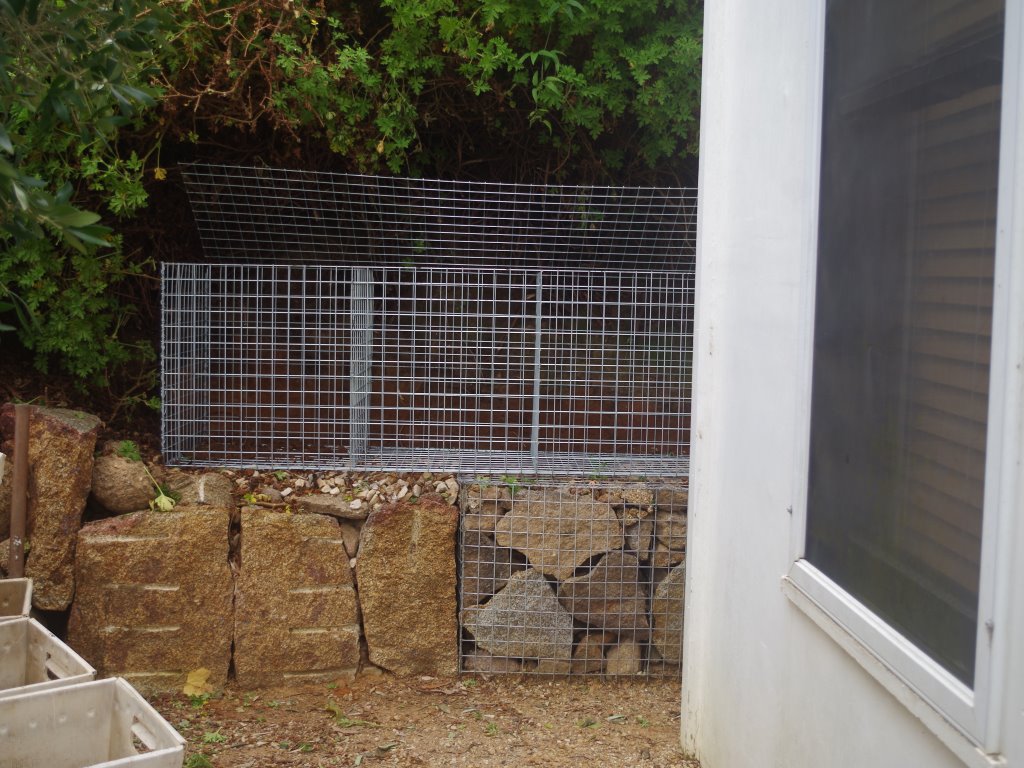
After a couple of hours of rock scrounging, we had enough rocks to weigh down the gabion cage. Woe is us, Peak Rocks is very real. We have to smash up some boulders over the next few weeks so as to get access to more usable rocks.
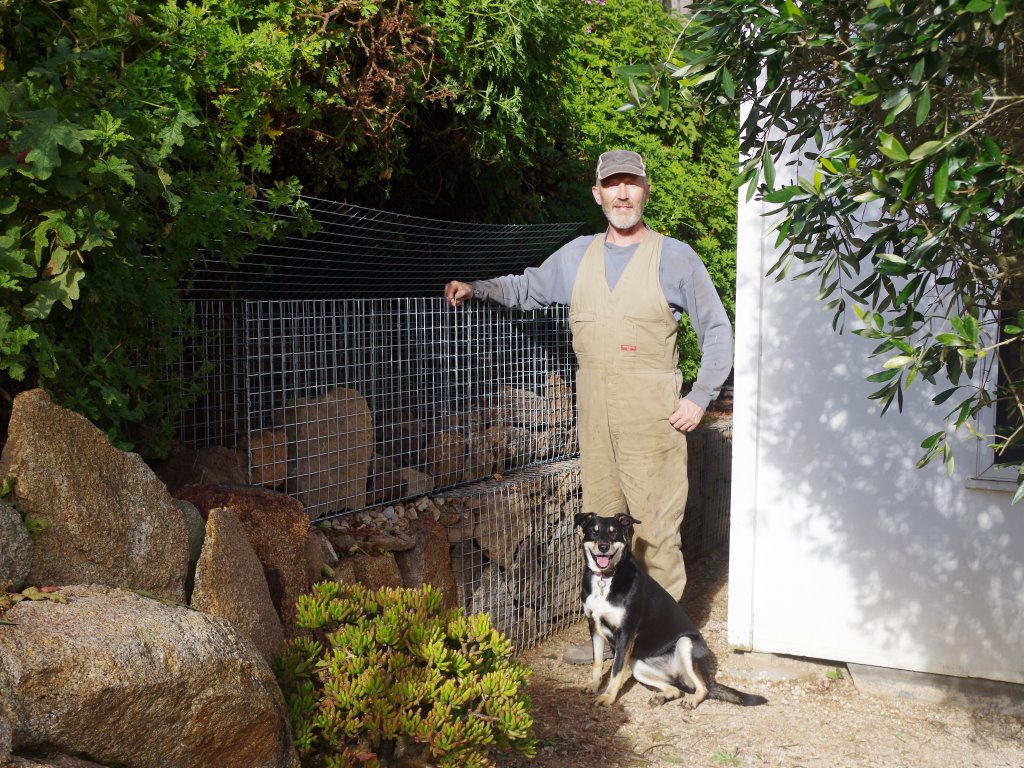
There will only be two second level gabions on that wall. Elsewhere on the long retaining wall, mid-sized rocks will perform a similar function, and many of those were also brought back up the hill and positioned.

The low gradient path project now has only approximately three more work days before it is completed. This week the highest section of the rock wall is being installed behind the old formerly rat infested shed.
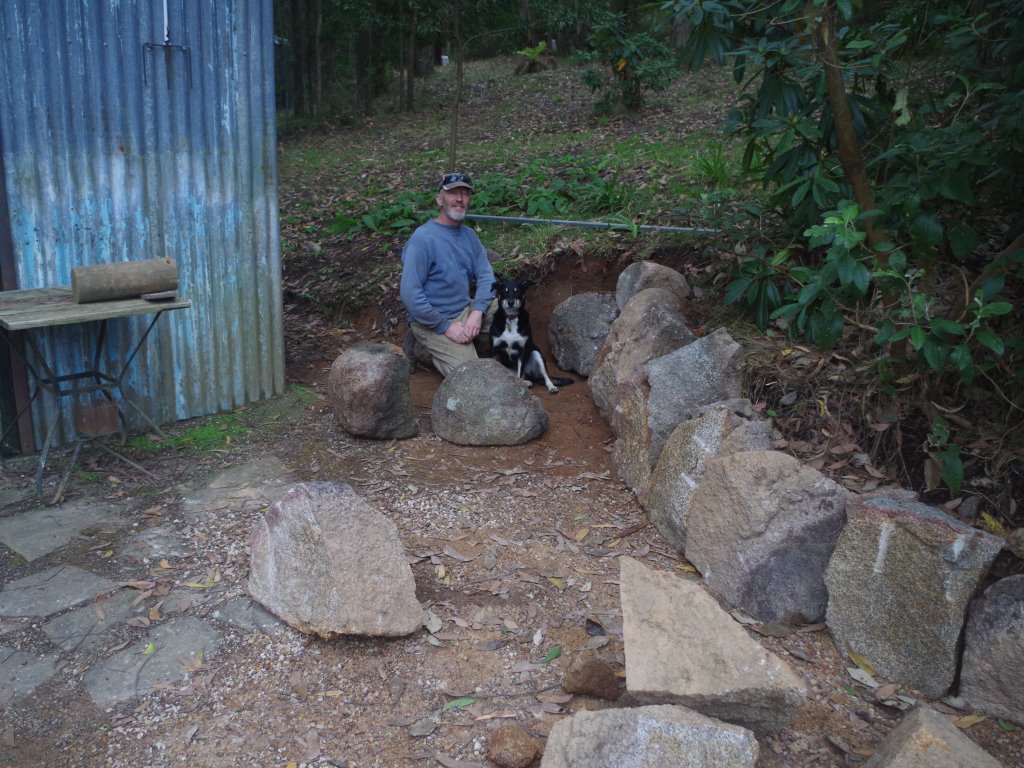
It’s hard to see in the above photo, but a lot of soil was removed so as to make the path there much wider.
Speaking of rats. The twitchy nosed little rodents have been unable to get into the house and/or chicken enclosure, so they have cracked the sads and broken into the greenhouse. I’d say it would be an unwise thing to consume so much chilli in one meal, but rats know their own business.

Wanting to put an end to the rodent mischief before they consume everything in the greenhouse, we sealed up the entrance near to the underside of the door where they’d broken in. A sturdy 100x100mm (4×4 inch) chunk of timber was used to seal any minor gaps.

The timber now sits flush against the door, and the rats will have a very hard time breaking through, until the next weak point is discovered.
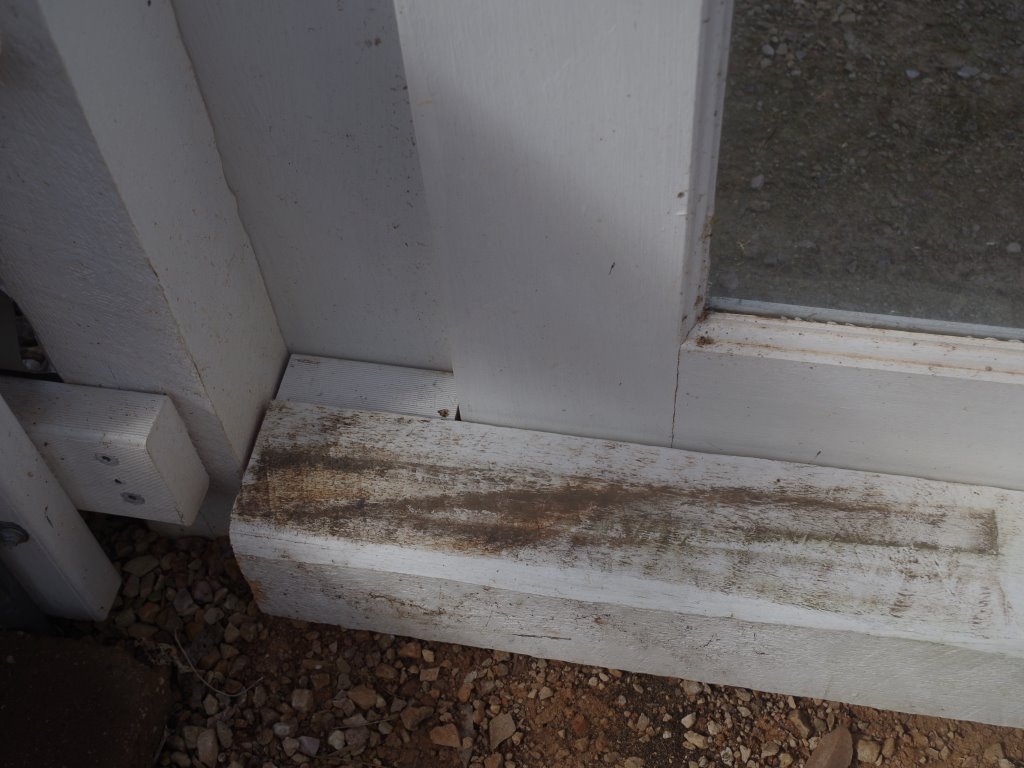
Just in case, we picked the remaining chilli’s. It would have been preferable to leave them on the plant so they stayed fresh for the winter, but there is no point putting temptation in the rodents path. And we’ll eat dry chilli’s.
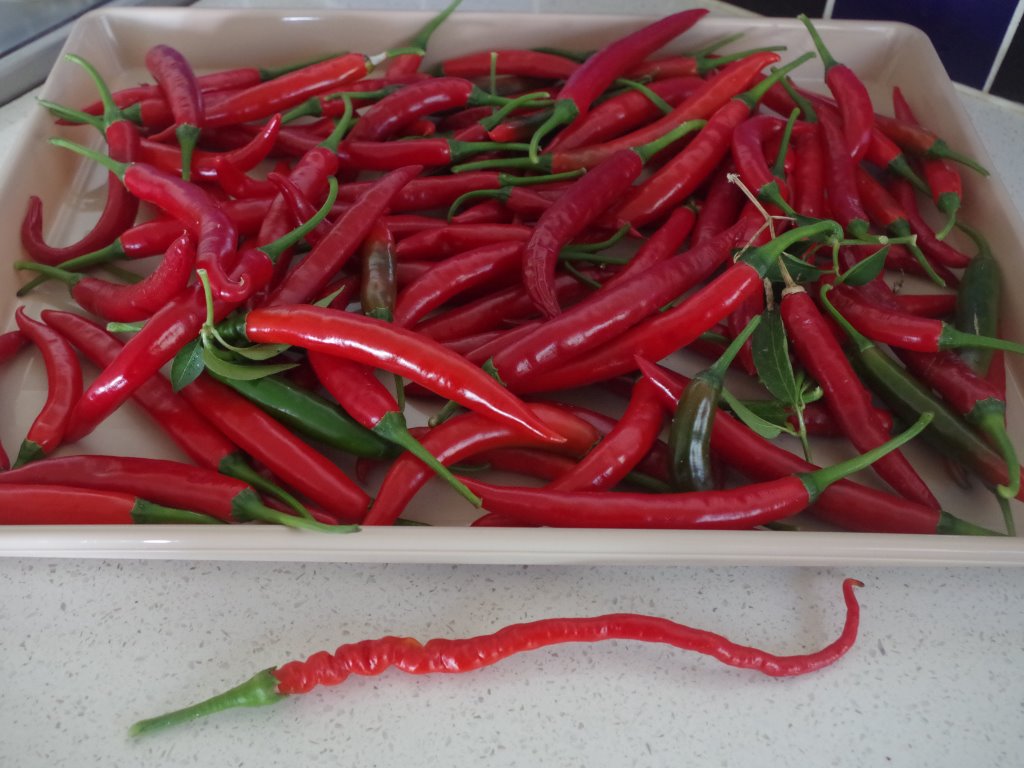
The parrots were getting interested in the persimmon crop, so those were also picked. It’s a non astringent Fuyu variety, and reasonably tasty.
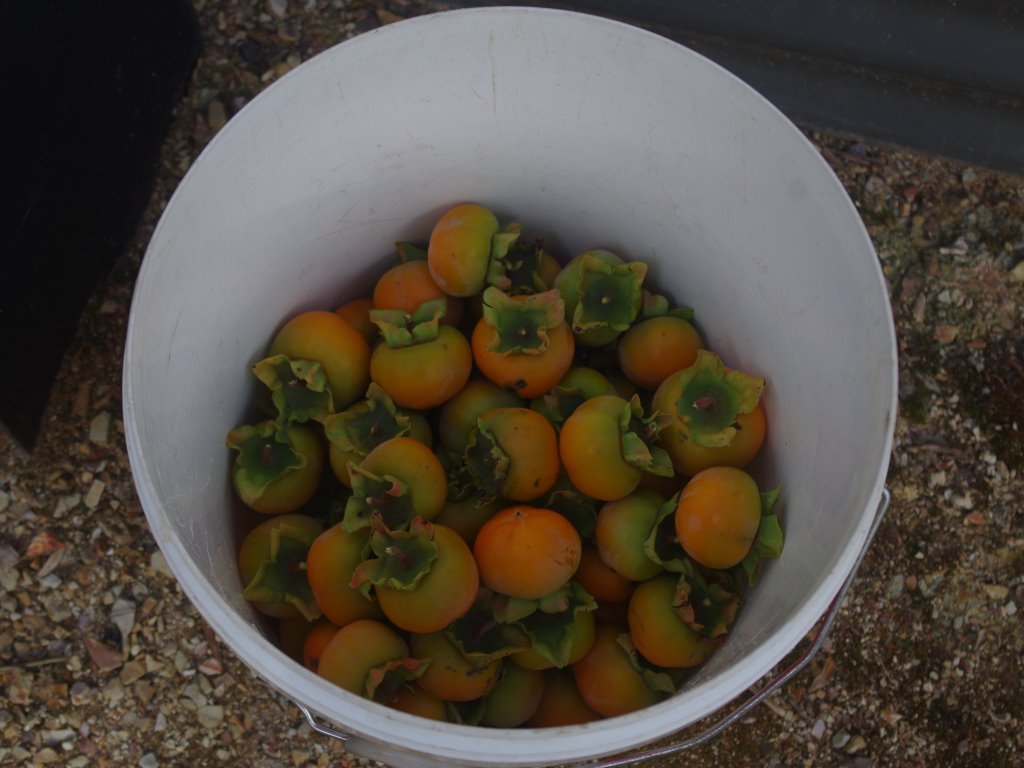
We’re learning how to store all of this produce so that it keeps well during the winter months.

As we get closer to winter, we’ve opened the gates on the blackberry enclosure so that the wallabies, wombats etc. can dine upon the leaves. Once the leaves are mosty gone, we’ll prune the canes and feed the soil there.

In a new garden bed, we’ve begun transplanting some of the many self seeded lavender plants.
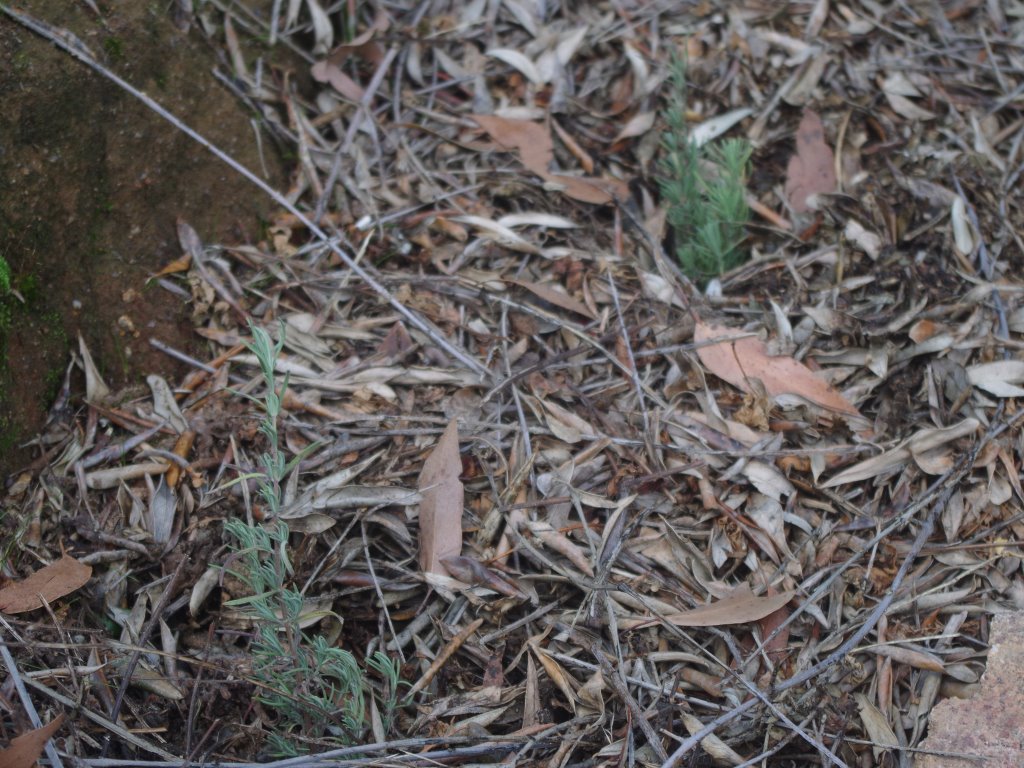
Onto the flowers:

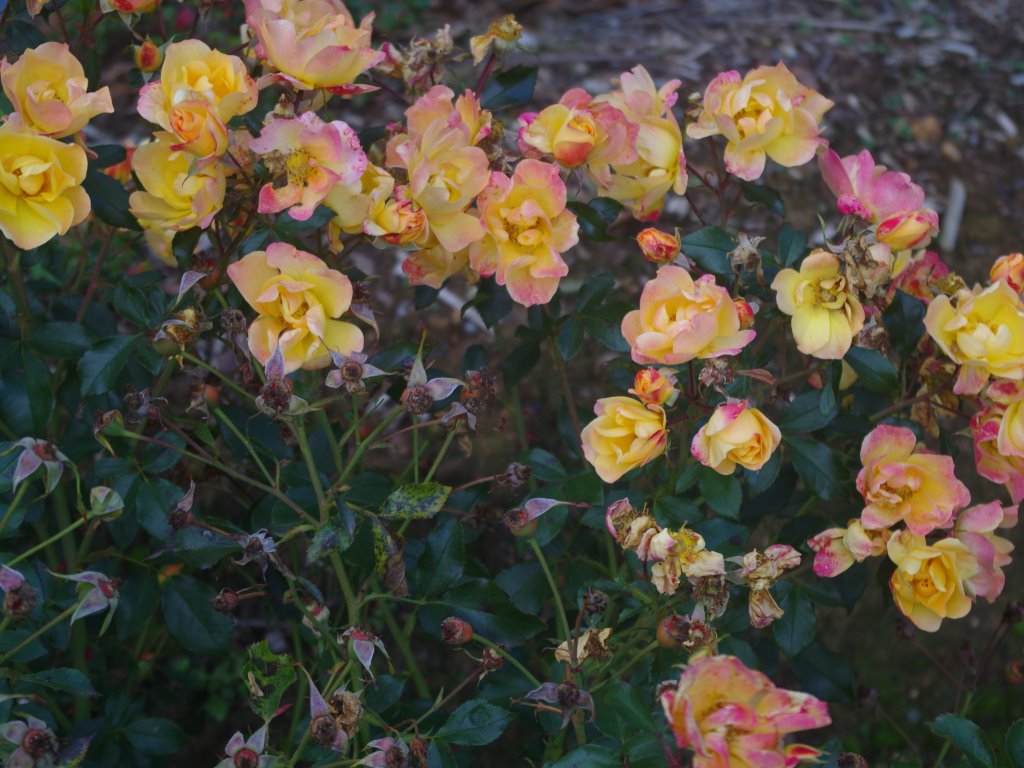
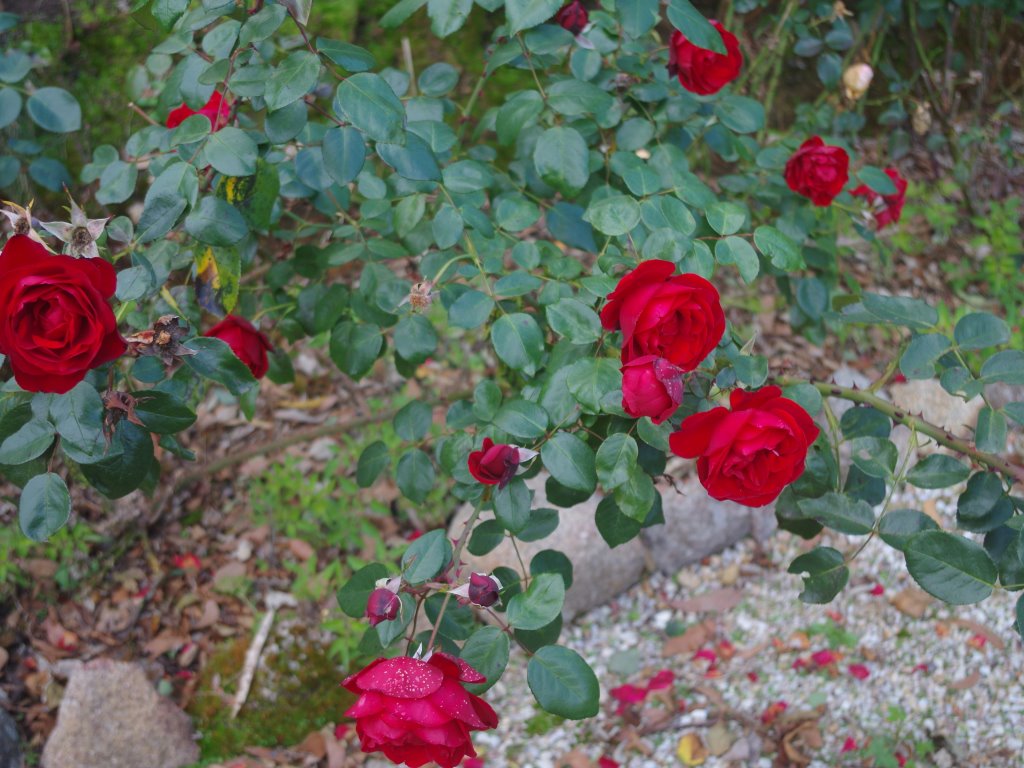
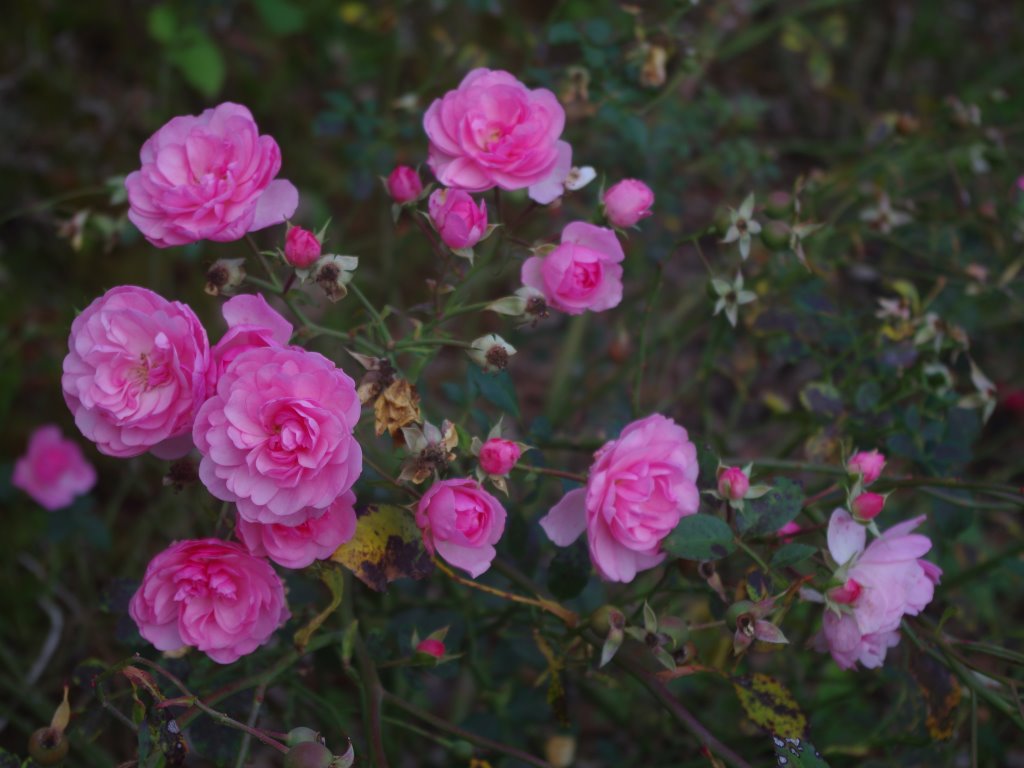

The temperature outside now at about 10am is 12’C (53’F). So far for last year there has been 338.8mm (13.3 inches) which is up from last weeks total of 333.2mm (13.1 inches)
